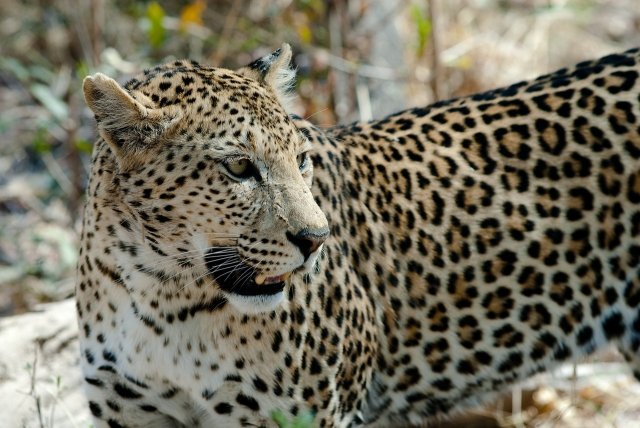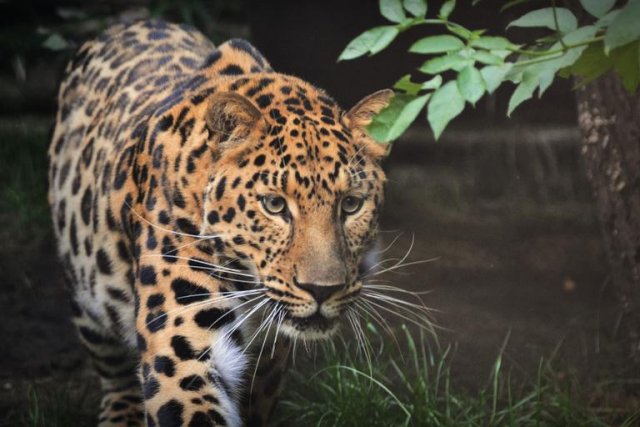The Enigmatic Elegance: Unveiling the Mesmerizing Beauty of Leopards
The Beauty of Leopards: 5 Fascinating Facts
Leopards, with their striking coat patterns and graceful movements, have captivated humans for centuries. These majestic big cats are known for their beauty, agility, and stealth. In this article, we will explore five fascinating facts about the beauty of leopards.
The Leopard’s Coat: A Masterpiece of Nature
One of the most distinctive features of leopards is their beautiful coat. Their fur is covered in rosettes, which are circular markings with a darker coloration surrounding a lighter center. These rosettes help leopards blend into their surroundings, providing them with excellent camouflage while hunting or hiding from predators.
Interestingly, the pattern of a leopard’s coat is unique to each individual, much like a human fingerprint. This allows researchers and conservationists to identify and track individual leopards in the wild. The coat patterns also vary depending on the leopard’s habitat, with those living in dense forests having more intricate patterns compared to those in open grasslands.
Adaptations for Stealth and Speed
Beauty of Leopards: Leopards are renowned for their stealth and agility, making them highly effective hunters. Their slender bodies, long tails, and powerful limbs enable them to move silently through their environment. Leopards have the ability to retract their claws, allowing them to walk silently and maintain their sharpness for hunting.
Another remarkable adaptation of leopards is their incredible speed. They can reach speeds of up to 58 kilometers per hour (36 miles per hour) in short bursts, making them one of the fastest big cats. This speed, combined with their agility, allows them to quickly chase down prey or escape from potential threats.
Exceptional Hunting Skills
Leopards are skilled and opportunistic hunters, capable of taking down prey much larger than themselves. They have a diverse diet that includes small to medium-sized mammals, such as antelopes, deer, and monkeys. Leopards are also known to hunt birds, reptiles, and even fish when the opportunity arises.
One of the most remarkable hunting techniques employed by leopards is their ability to climb trees while carrying their prey. They often hoist their kills onto tree branches to protect them from scavengers and other predators. This behavior is unique among big cats and showcases the leopard’s strength and adaptability.
Conservation Challenges
Despite their beauty and adaptability, leopards face numerous conservation challenges. Habitat loss, poaching, and conflict with humans are the primary threats to their survival. The expansion of human settlements and agricultural activities has resulted in the destruction of leopard habitats, forcing them into smaller and fragmented areas.
Poaching for their fur, bones, and other body parts also poses a significant threat to leopards. Their body parts are highly valued in traditional medicine and the illegal wildlife trade. Additionally, conflicts arise when leopards come into contact with humans, especially in areas where livestock is present. This often leads to retaliatory killings by farmers seeking to protect their animals.
Conservation Efforts and Success Stories
Fortunately, there are numerous conservation organizations and initiatives working tirelessly to protect leopards and their habitats. These efforts include establishing protected areas, implementing anti-poaching measures, and promoting coexistence between leopards and local communities.
One successful example of leopard conservation is the work done in the Samburu National Reserve in Kenya. Through community-based conservation programs, local communities have been actively involved in protecting leopards and their habitats. This has led to a decrease in human-leopard conflicts and an increase in leopard populations in the area.
Beauty of Leopards: Key Takeaways
- Leopards have a unique and beautiful coat pattern, which helps them blend into their surroundings.
- They are stealthy and agile hunters, capable of reaching impressive speeds.
- Leopards have exceptional hunting skills and can climb trees while carrying their prey.
- Conservation challenges, such as habitat loss and poaching, threaten their survival.
- Conservation efforts and community involvement are crucial for protecting leopards and ensuring their long-term survival.
Beauty of Leopards: Leopards are truly magnificent creatures, both in terms of their physical beauty and their remarkable adaptations. However, their survival is at risk, and it is our responsibility to protect them and their habitats. By raising awareness, supporting conservation efforts, and promoting coexistence, we can ensure that future generations will continue to marvel at the beauty of leopards in the wild.
Read More About Leopards From Wikipedia





